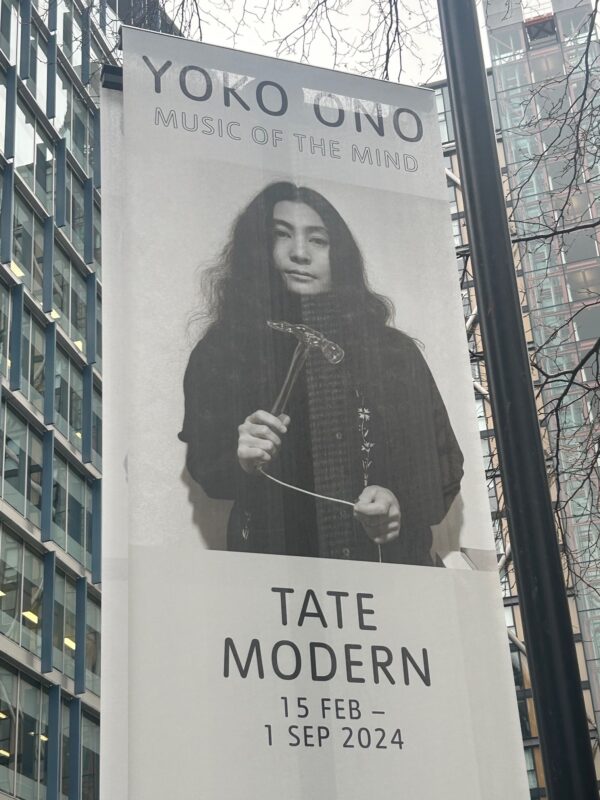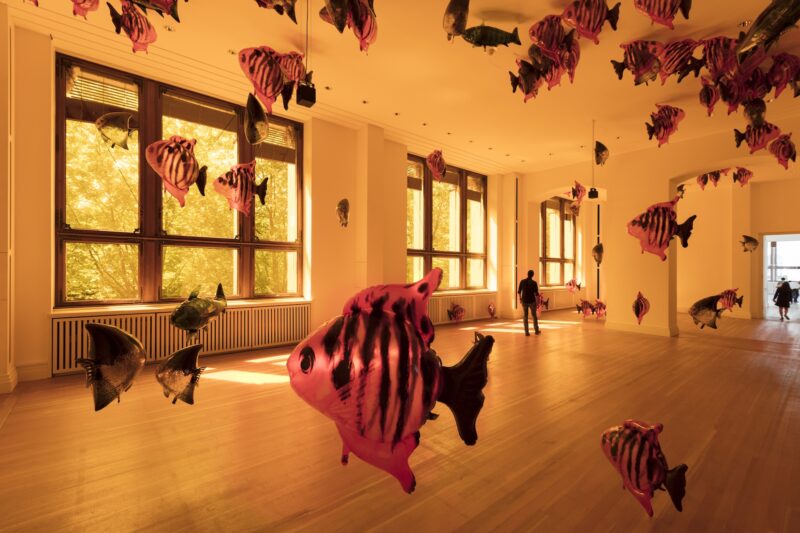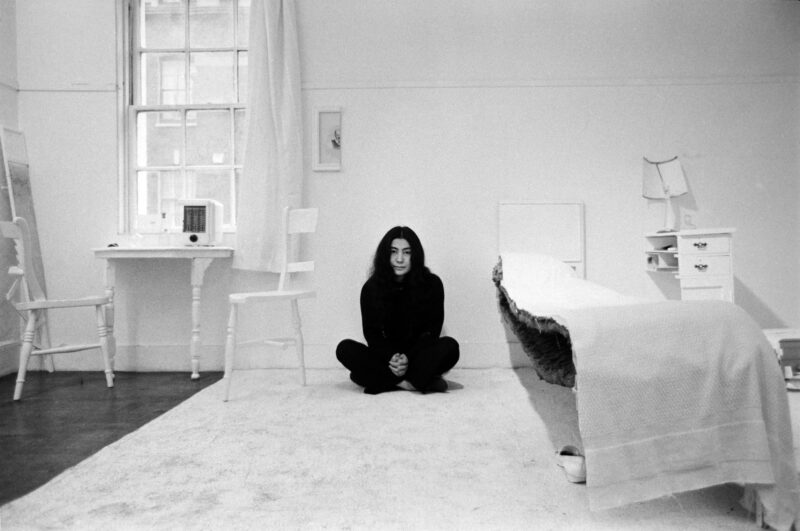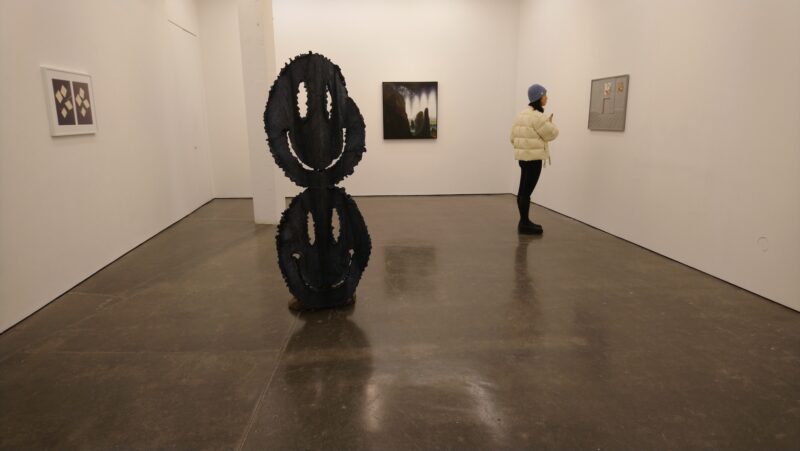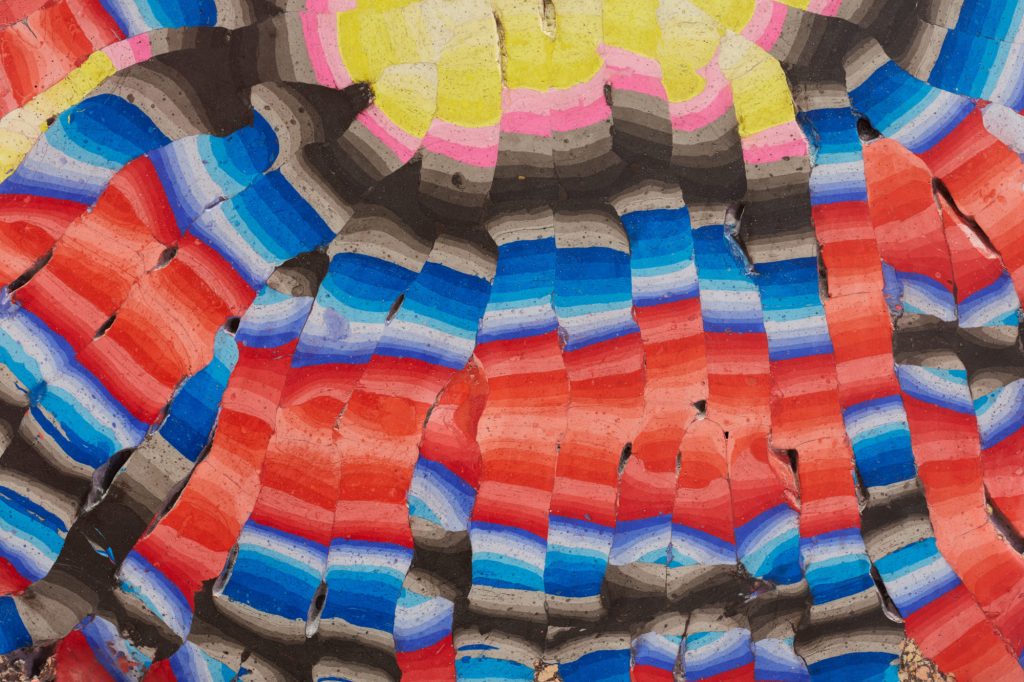
Installation view of Fossil Psychics for Christa (2019) by Kerstin Brätsch, The Museum of Modern Art, New York. © 2019 The Museum of Modern Art. Photo: Heidi Bohnenkamp
The Museum of Modern Art have announced six long-term, site-specific contemporary artworks, on view in public spaces to celebrate MoMA’s opening on October 21, 2019.
Featured in the Samuel and Ronnie Heyman Lobby, Cafe 2, the Louise Reinhardt Smith Gallery, the Carroll and Milton Petrie Terrace Cafe, and the Lewis B. and Dorothy Cullman Education and Research Building, visitors will see new commissions by Kerstin Bratsch (German, born 1979), Experimental Jetset (Danny van den Dungen, Marieke Stolk, and Erwin Brinkers, founded in 1997), Goshka Macuga (Polish, born 1967), Yoko Ono (Japanese, born 1933), and Philippe Parreno (French, born 1964). Additionally, a large-scale work by Haim Steinbach (Israeli and American, born 1944), acquired on the occasion of The Museum of Modern Art’s 2019 reopening, will also be on view for the first time at MoMA. This suite of contemporary displays is organized by Yasmil Raymond, former Associate Curator, Department of Painting and Sculpture, with Tara Keny, Curatorial Assistant, Modern Women’s Fund, Department of Drawings and Prints.
Kerstin Bra?tsch For her site-specific commission in the Petrie Terrace Cafe?, Fossil Psychics for Christa (2019), Bra?tsch created a multipart installation in a range of mediums evoking fragmented brushstrokes. After researching pigments used in Italian Renaissance paintings, the artist developed the colours for the hand-painted tempera walls and channels of the restaurant interior in collaboration with Italian decorative painters Valter Cipriani and Carolina D’Ayala. Bra?tsch also worked with Cipriani to make the 35 reliefs on the walls, using the 17th- century Italian technique stucco-marmo, in which pigments are mixed with wet plaster and glue, then polished, to create the effect of marble. These vibrant works evoke not only brushstrokes but also fossil-like fragments and fantastical creatures. A custom wallpaper integrates recurring elements in work—dinosaurs, coloured marbled stone, and cutouts—into MoMA’s signature black marble motif.
Experimental Jetset For their commission in Cafe 2, Full-Scale False Scale (2019), graphic design collective Experimental Jetset referred to two historic architectural sites. The first is the interior of Cafe L’Aubette, in Strasbourg, a collaboration between artists Theo van Doesburg, Sophie Taeuber-Arp, and Jean Arp, completed in 1928. The second is Philip Johnson’s 1964 extension of MoMA, in which Cafe 2 is located. Experimental Jetset incorporated the colours and use of relief seen in the early modern restaurant into metal panels that echo the curved edges of Johnson’s windows. Texts and terms relating to modernist theories of colour and space are quoted on the walls and placemats.
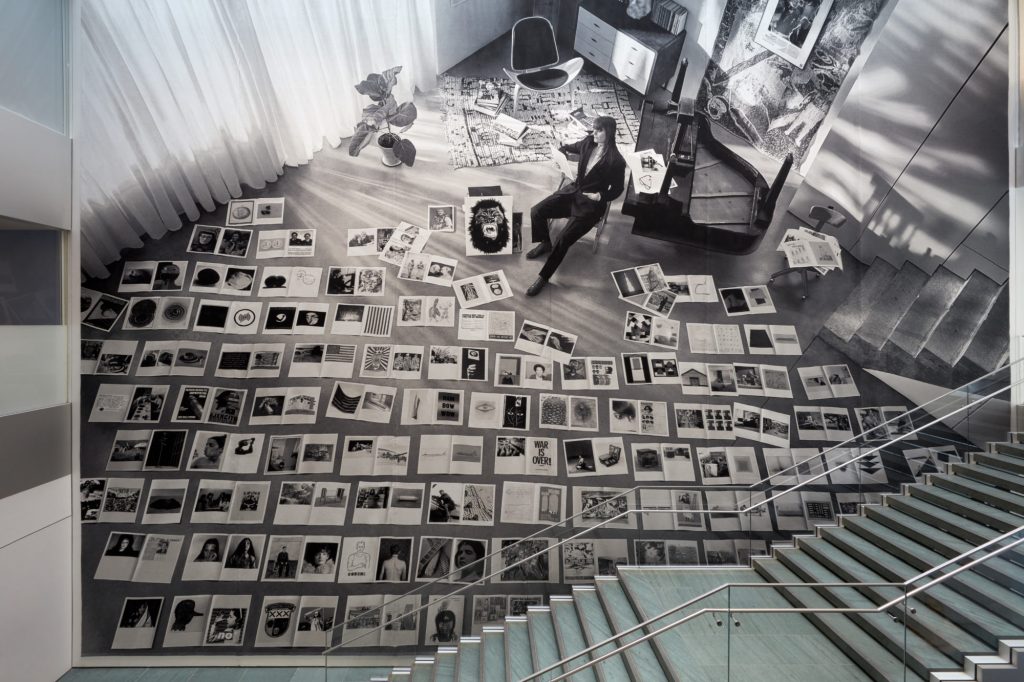
Installation view of Exhibition M (2019) by Goshka Macuga, The Museum of Modern Art, New York. © 2019 The Museum of Modern Art. Photo: Heidi Bohnenkamp
Goshka Macuga In Macuga’s commission, a monumental Jacquard tapestry installed in the Cullman Education and Research Building, the artist surrounds herself with images of over 100 works of art from MoMA’s collection and Archives, and her own work. This image evokes a photograph taken in 1954 of the French politician, publisher, and novelist Andre? Malraux observing the layout of Le Musee imaginaire de la sculpture mondiale (The Imaginary Museum of World Sculpture). Malraux observed that museums “estrange the works they bring together from their original functions and . . . transform even portraits into ‘pictures.’” Inspired by time spent in MoMA’s Archives conducting research on the Museum’s collection and exhibition history, Macuga created her own layout of a book of an imaginary exhibition, Exhibition M. The resulting tapestry frames the Museum and its collection as a living entity, open to reinterpretation and reevaluation.
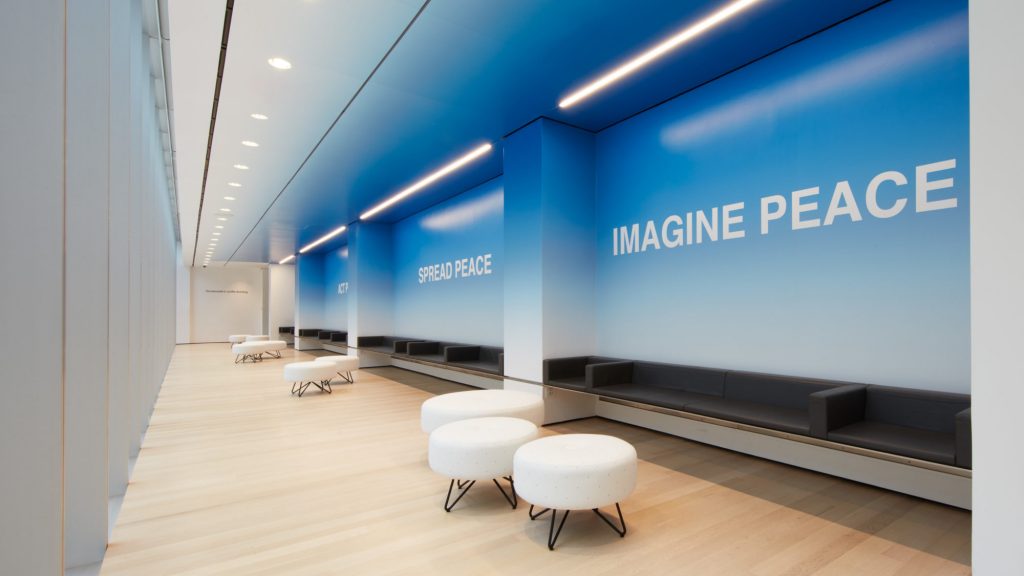
- Installation view of PEACE is POWER (2019) by Yoko Ono, The Museum of Modern Art, New York. © 2019 The Museum of Modern Art. Photo: Heidi Bohnenkamp
Yoko Ono Yoko Ono’s commission in the third-floor Louise Reinhardt Smith Gallery, PEACE is POWER (2019), is the latest in the artist’s long history of social engagement and of collaborating with the Museum. In response to the Vietnam War, Yoko Ono and John Lennon established the concept “WAR IS OVER! (if you want it)” in 1969, hoping to rouse a generation to conceive of a world without war. Similarly, her invitation to “Imagine Peace” has been expressed since the early 2000s through billboards, advertisements, posters, and, more recently, tweets. In this installation, Ono covered the walls and ceiling of the space with blue sky, a recurring motif in her practice. The title of the work appears across the windows in 24 languages, and woven into the furniture’s upholstery is the affirmation “yes, yes, yes,” in Ono’s handwriting.
Philippe Parreno “A sensible and sentient automaton that perceives and reflects” is how Parreno describes this site-specific environment. Consisting of a series of interconnected objects, Echo (Danny the Street) “lives” in the Museum’s lobby and moves in response to data culled from its surroundings in real time. Like the fictional DC Comics character Danny the Street—an omnipresent superhero who communicates with others by morphing into buildings, street signs, and lights—Parreno’s work is a living piece of urban geography that takes different forms throughout the day. His automaton manifests itself through motorized sculptures, light, video animation, and sound, creating “a space as a being.”

Installation view of hello again (2013) by Haim Steinbach, The Museum of Modern Art, New York. © 2019 The Museum of Modern Art. Photo: Heidi Bohnenkamp
Haim Steinbach Steinbach’s hello again (2013), acquired on the occasion of MoMA’s reopening, will also be installed in the Museum’s main lobby as part of this suite of contemporary art in public spaces. Over the past four decades, Steinbach has amassed a collection of carefully chosen phrases and slogans from newspapers, magazines, books, and other everyday sources. hello again is part of this ongoing series of “found statements,” which are humorously infused with philosophical undertones as they are removed from their original contexts. He reproduced hello again in its original font, altering only its scale, which is adjusted to the dimensions of the wall where it is installed. In this way, the language itself becomes an image, and vice versa.
MOMA reopens on October 21st www.moma.org/about/new-moma

